

AMERICAN WEREWOLF:
THE TRUE STORY OF THE TORSO SERIAL KILLER CONFESSIONS
SELECT ADVANCE
PREVIEW EXCERPTS FROM A NEW BOOK BY PETER VRONSKY
Part 1(a): How It All Began, Deedeh's Daughter
Jennifer Weiss & Building a Rapport with the Torso Serial Killer
Copyright © 2024 Peter Vronsky All Rights Reserved
~ Uncorrected Ms. - Version 1.2 June 9, 2024 ~
Be not envious of evil men,
nor desire to be their friend,
for their hearts devise destruction,
and their lips speak deceits.
~Proverbs 24:1-2
PRELUDE
This is the story of how Jennifer Weiss, the daughter of one of
serial killer
Richard Cottingham's
victims, and I, assisted
in 2021-2022 in closing nine cold cases he perpetrated in New York and New Jersey
1968-1974,
including the oldest cold case in American history closed through
perpetrator DNA (as opposed to familial DNA): the 1968 murder of Diane Cusick
in Valley Spring, NY.
(See
NY POST: Victims' Kids Confront Serial Killer "Torso killer Richard
Cottingham: 'Pure Evil'.)
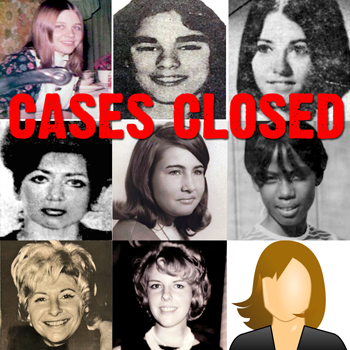
~Bergen County, New Jersey
Loraine Marie Kelly & Mary Ann Pryor 1974
(April 2021)
Mary Ann Della Sala 1967 (October 2022 - announced March 2023)
~Rockland County, New York
Lorraine Montalvo McGraw 1970 (June 2022)
(With additional assistance from Sonia Ruiz
McGraw)
~Nassau County, New York
Diane Cusick, 1968 (December 2022)
Laverne Moye 1972
(December 2022)
Mary Beth Heinz 1972((December
2022)December 2022)
Sheila Heiman 1973
(December 2022)
Marita Rosado Nieves 1973
(December 2022)
THE "TIMES SQUARE TORSO MURDERS" DECEMBER 2,
1979.
The chain of events that took me on this odyssey began some forty years ago,
at around 8:45 a.m. on Sunday morning, December 2, 1979, when I was working
in New York City on a film assignment. I was twenty-three years-old.
That morning I had a brief ten-to-fifteen second encounter with serial killer Richard Cottingham, the Torso Killer, as he was fleeing the scene of a double murder he had perpetrated in Room 417 of the Travel Inn Motel at 515 W. 42nd Street in New York City.
We "bumped into" each other in the elevator doors in the lobby as he was coming down, carrying two severed heads in a valise, and I was getting on, intending to check into the hotel. He bumped me on the shin with the bag of heads as he was getting off. I had no idea that I had just encountered a serial killer; "bumped by a monster" as I would later write.
I described the encounter in detail in my book
Serial Killers: The Method and Madness of Monsters.
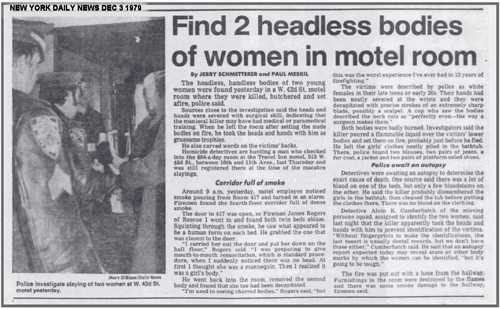
The victims, one of which was identified later, were 22-year-old (or 27) Iranian national Deedeh Goodarzi and an unidentified teenage
White female. (Deedeh had given different years of birth
during her arrests - she was either 22 or 27 at the time of her death.
Police were never able to find any record of her entry into the United
States, other than her father stating he brought to the USA from Iran in
1969 when she was 12-years old. NYPD could not locate any INS record
for her entry to the US or citizenship.)
Cottingham had kept the two women - both sex workers - in the hotel room for two nights, tortured them, murdered them, mutilated and beheaded them and severed their hands, and fled with their heads and hands in a valise after setting their torsos on fire on the hotel room beds.
The heads and hands were never found and the teenage victim is still unidentified to this day. The murders were dubbed by the press at the time as "The Times Square Torso Murders" even though they actually happened in Hell's Kitchen on 42nd near Tenth Avenue. It is easily among the top twenty most notorious murders in the history of New York.
That brief encounter with a serial killer in 1979, in an era before the term "serial killer" was being used in popular culture or in news media, inspired me to some twenty-years later write four books on the history of serial homicide and its investigation. (See petervronskybooks.com )
A CALL FROM DEEDEH'S DAUGHTER
One night in the late spring of 2017 I was contacted by
Jennifer Weiss, the biological daughter of Deedeh Goodarzi,
who had named her infant girl Ghaniya Jaqualine Roberts. Deedeh had reluctantly placed Jennifer
for adoption
ten days after her
birth in May 1978. In December 1978, Jennifer was adopted by a loving family in
New Jersey who had three sons but wanted a girl. The Weiss family
took her in as their own, renamed her Jennifer Ann and she was raised in a happy and loving home in
New Brunswick, NJ.
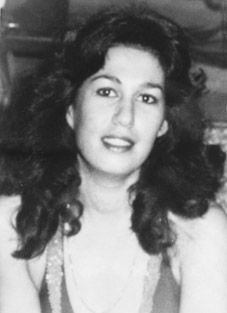
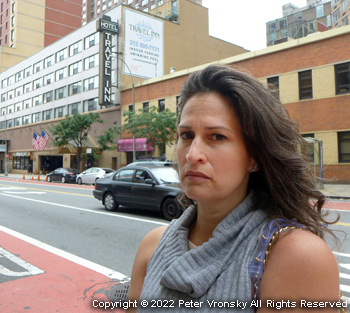

Jennifer was an eighteen-month infant when Deedeh was murdered in 1979, and would not learn of her biological mother's fate until the early 2000s when she began to search for her genetic history, wanting to find her mother and perhaps meet her. Instead she discovered that her mother had been murdered by serial killer Richard Cottingham the "Torso Killer" in the notorious Times Square Torso Murders when she was an infant.
Researching into the case, Jennifer read my books and watched Richard Cottingham being interviewed by Canadian journalist
Nadia Fezzani on YouTube and saw Cottingham state that he would assist any family member of his victims in identifying their case or coming to terms with their murder. Jennifer decided to take Cottingham at his word.While Cottingham was convicted at trial in the murders without the heads, Deedeh's severed head and that of the unidentified teenage "Torso Jane Doe" murdered with her, had never been located by NYPD. It remained a mystery as to what happened to the heads. Cottingham admitted nothing and insisted he was innocent.
Inspired by Nadia Fezzani's 2009 prison visit with Cottingham, Jennifer decided to visit him herself and try to persuade him to reveal to her where he concealed the severed heads. Jennifer wanted to recover her mother’s head and reunite it with her torso resting in her unquiet grave on Hart Island, New York’s potter’s field off the shoreline of the Bronx, where over a million unidentified or unwanted indigent New Yorkers are buried in mass row graves. See Hart Island Project
In the early spring 2017 Jennifer began visiting Cottingham in Trenton New Jersey State Prison, a maximum security facility where Cottingham was incarcerated since 1980, located about thirty-minutes drive from Princeton where she lived with her husband and four daughters.
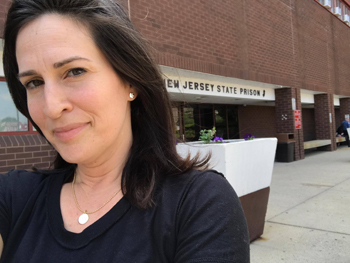
Jennifer made face to face personal "contact visits", the kind
in which there is no glass between the inmate and visitor, and they can have limited physical contact like holding hands or a hug. These visits are for pre-screened family, friends or visitors who might have a positive or redemptive influence on the inmate, and allow the inmate and visitor a degree of privacy and intimacy that a 'glass booth' phone handset visit does not.The two of them hit it off right
away, with Jennifer calling him "Richie" as those close to him did, including cops who worked on solving some of the murderers he committed. He was also known as "Rich" and "Richie Rich." At his job as a computer operator at Blue Cross/Blue Shield Insurance, where he worked steady for fourteen years before his arrest and was 'a character' he was known as "the Cott." Jennifer also used to call him sardonically "my big baby" whenever he complained to her; like many serial killers, Cottingham typically has an infantile or child-like dimension to him.Since Cottingham had admitted to Nadia that he had known Deedeh for several years before murdering her, Jennifer also began to suspect that he might be her biological father and was trying to persuade Cottingham to do a paternity DNA test.
The challenge Jennifer had, however, was making sense geographically and historically of what Cottingham was saying to her about where he buried the heads. Narrative history and geography were not in her 'toolbox' of aptitudes. As a professional historian with a PhD, it was in mine.
JENNIFER INTRODUCES ME TO COTTINGHAM
When Jennifer contacted me, I was finishing what I had
planned to be my absolutely last book on serial killers,
Sons of Cain. The sub-title of the book was, "A history of
serial killers from the Stone Age to the present." There was nowhere
to go before "the Stone Age" and nowhere to go after "the present";
I had no plans to write any more about serial killers, having felt I said
everything I had to say about them.
Jennifer invited me to assist her
in her quest, and assured me that she could persuade Cottingham to meet with
me for interviews if I came down to the prison with her in Trenton and that
it could make for a good next book for me to write if I wanted to.
I was persuaded by her. Especially as my brief encounter with Cottingham was the ‘alpha’ of my books on serial killers, starting with my first book in 2004,
Serial Killers: The Method and Madness of Monsters which opened with an account of my
brief encounter with Cottingham in 1979 and an outline of his case.
But other than
that introductory chapter in Serial Killers, I had never written in any detail about Richard Cottingham.
In a sense, having 'bumped into him' and his having inspired my first
book (they say, "write what you know"), Cottingham was "my serial killer" in the way Jennifer's mother, Deedeh Goodarzi
was "my victim."
I would write one more serial killer book I decided.
When I agreed to go on this odyssey with Jennifer, I thought it would be an eighteen month thing at its longest. Not the six years it has been so far as I write this in 2024.
Jennifer and I
did not have any plans or intentions of solving any of Cottingham's
cold case murders. It just did not enter our heads that we would be
capable of doing such a thing. It was going to be a straight-forward
true crime book describing Cottingham's crimes already on the record and
Jennifer's visits to him in her quest to find her mother's severed head.
Before I could secure a book deal, my publisher required that Jennifer and I enter into a contractual agreement assigning me the exclusive rights to her story with Cottingham and stipulating her remuneration for doing so.
I did not plan on being part of the story at all; I was just going to stand back, observe it and write about it, helping along a little to locate the severed head and write a definitive book about Cottingham, concluding, I hoped, with the recovery of the severed heads and an identification of the teenage girl.
(See Part 6: 2017-2020 - Jennifer, 'Richie' and Me: "Life is What Happens While You Are Making Other Plans" for a more detailed account of how Jennifer and I came to work together.)
COTTINGHAM IN PRISON 1980-2009 - THE VOW OF
SILENCE
As Jennifer’s lawyer and my agent's lawyer worked out a contract
life story rights assignment, non-disclosure
and exclusivity provisions, I began a tentative correspondence with
Cottingham by mail and texts on JPAY - a prison e-mailing system.
In our initial letters Cottingham agreed to tell me "the inside story" of the six murders he was serving time for, five in New Jersey and New York in which he was convicted in three trials in 1981-1984, and the sixth to which he confessed and pleaded guilty in New Jersey recently in 2010.
Since his arrest in 1980 until 2009, Cottingham insisted he was innocent and had been framed and railroaded by police and the prosecutors, especially by Dennis Calo, the Bergen County prosecutor.
After his arrest in 1980 and convictions in a series of trials in New Jersey and New York 1981-1984, in which he was sentenced to two life terms plus 350 years, Cottingham vanished off the face of the earth for thirty years, becoming a prison hermit, refusing to give interviews or talk to writers and journalists. Eventually everybody forgot about him, including the new generation of corrections officers who were kids when Cottingham was sent away. By the 2000's, nobody knew who he was or heard of the "Torso Serial Killer."
But in 2009 Nadia Fezzani persuaded him to do a television interview with her for a French TV documentary, in which for the first time he admitted he had indeed committed the murders and that he knew for several years Deedeh Goodarzi, and had cut her hands and head off, and set her torso on fire in an attempt to conceal her identity, fearing that she might be somehow later connected to him. The other still unidentified girl just happened to be there.
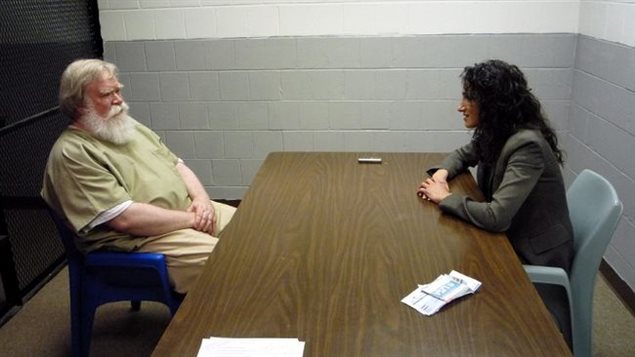
Cottingham also made a sensational statement in his interview with Nadia, claiming that he had committed between 85 to 100 "perfect murders" of women that were still unsolved, which at the time was not taken seriously as serial killers often tend to 'brag' and inflate their importance by making false murder claims. If Cottingham committed 85-100 murders, that would make him the most prolific sexual serial killer in American history!
Cottingham's documented killing period when Nadia interviewed him was 1977-1980, four years, in which he was convicted of killing five women. His claims of killing a 85-100 were ridiculed and ignored.
But then in 2010 he suddenly confessed and pleaded guilty to the 1967 murder of 29-year-old Nancy Vogel, a mother of two children in New Jersey. He actually had begun confessing in 1998 but nobody knew that. (See: Part 2: 2010 - Solving the Nancy Vogel 1967 Cold Case Murder)
Now a ten year killing window was added to his four years of murders on which he was convicted, and Cottingham claims began to gain traction and plausibility, for 100 murders over a period between 1967 to 1980, mathematically broke down to approximately one murder every six weeks.
1967-1980 was an era before DNA, before the emergence of FBI profiling, before ubiquitous computer record keeping, before inter-jurisdictional databases, and before the term "serial killer" was coined. (The first time the construct "serial murderer" appeared in media, was in May 1981 in a New York Times article describing Wayne Williams, the Atlanta Child Murderer.)
In other words, Cottingham's claim of a possible 100 victims was plausible and doable.
But I was not going to attempt to investigate and uncover
anything about the 85-100 "perfect" murders he claimed he had committed I
assured him. And I meant it, because the proposed book was going to be a ‘quickie’
true crime book, scheduled to be published within two years of Jennifer and
I signing a deal and focused on the
closed Cottingham murder cases, about which no definitive book existed,
other than journalist Ron Leith's 1983 quickie book
Torso Killer now out of print, originally entitled in hardback
The Prostitute Murders. Ron had written and published
the book after Cottingham's murder convictions in New Jersey in 1983 but
before his trial in New York for the Torso Murders in 1984. Leith's book was
not comprehensive or definitive, and there was no other book out there other
than self-published rehashes of Leith's book.
I was going to write that book now, concluding with Jennifer’s search for her mother’s head and
her emerging belief that Cottingham not only had murdered her mother, but was her biological father
too – an ironic ‘true crime’ story with a twist: not only did the serial
killer murder her mother, but he was also her biological father at the same time!
With a two-year publishing schedule, I would have to research and write the book in eighteen months to give the publisher six months to copy edit the manuscript and their sales people secure pre-orders from bookstores. I knew I wasn't going to be uncovering or closing any unsolved murders, not in eighteen months in addition to the six he was convicted in and would talk to me about.
Now six years later in 2024 as I write this, the book is still unpublished, and Cottingham is in prison for eighteen murders, nine of which Jennifer and I had a direct role in assisting law enforcement in closing!
BUILDING A RAPPORT WITH A
SERIAL KILLER: LAMENTING DIRTY OLD NEW YORK
Our lawyers hammered out contract acceptable to Jennifer and
me and we signed the deal in early January 2018, and in February I flew from Toronto Canada where I am based, to New Jersey and
met Jennifer in person for the first time. The next morning, she took me to meet Cottingham
in prison.
In our first meeting, Cottingham was shy with me and very protective of Jennifer. He asked some very smart business questions about my books, like who my publisher was, did I have an agent and how many copies I had sold and what was in it for Jennifer. I told him I sold nearly a quarter-million copies and that my publisher was Penguin Random House. Jennifer laid out the contract she had signed. Cottingham was impressed and satisfied with my credentials. He had already read one of my books that I sent him too, Ridgeway, the only book that is not about serial killers. (The prison prohibits Cottingham from receiving "true crime" books.) Ridgeway, about Irish-American Fenian insurgents in the post-Civil War era, hit a nerve with Cottingham who is fiercely Irish and a bit of a history buff. He was persuaded I was a "serious" writer.
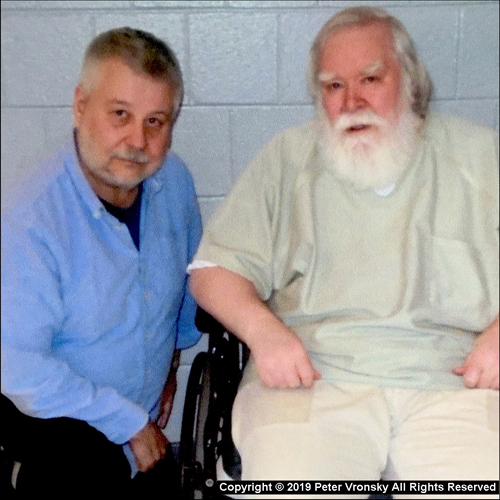
In our subsequent conversations, Cottingham and I very quickly and easily built a rapport.
We bonded over our mutual nostalgia for 'dirty old New York' of the 1960s-1970s, "Taxi Driver" New York, an era of anarchy, danger and despair, garbage strikes and chaos, fear and loathing, when New York was going bankrupt and was dangerous and collapsing on itself, an era that I had experienced first hand as a filmmaker working there for extended periods of time in the 1970s-1980s. That my years there coincided with Cottingham's last years of freedom before his arrest in May 1980, added a certain sweet wistful nostalgia to our mutual reminisces for him.
Cottingham and I talked a lot about the Times Square and the "Forty Deuce", the strip along 42nd Street between Seventh and Eighth Avenues with porn stores, peep shows, strip clubs and grind-house movie theatres that was about to be celebrated in the HBO series The Deuce, as Cottingham and I were getting to know each other.
Cottingham walked the Deuce nearly three-times daily from an inexpensive west-side parking lot he parked in, to the east side where the Blue Cross Insurance office he worked in was located and where it was expensive to park during the daytime. Working his preferred 4 PM to midnight night shift, he would walk back to the parking lot during his 8 PM "lunch" and drive back and park his car on the east side near his office once street parking became available in the evening. That way he had his car there when he emerged at the end of the shift, and hit the nightlife in New York City, spent time with his three different mistresses, or trolled for victims often until just before dawn. Cottingham always came home by dawn, so the neighbors saw his car there when when they woke in the morning. It was a matter of propriety and appearance. He would see his two sons at breakfast and off to school, his third child a girl still too young for school, and then he'd go to sleep afterwards. But if he did not make home by dawn, then he did not come home at all until the evening or the next morning.
Cottingham and I being only nine years apart in age, would have 'two-old-farts' nostalgic talks about night clubs, and drive-ins, and girls on the beach, and the price of hot dogs and hookers, and horse racing at Belmont, about sex clubs like Plato's Retreat, street life on the Deuce, and Needle Park, the Village, and the Upper East Side "Girl Ghetto" singles scene. Cottingham began venturing out to New York as a twelve-year-old on a commuter bus from New Jersey where he lived, and then daily from 1964 to 1980 when he worked there and was very self-conscious and aware of the special place New York was; he wasn't jaded at all about being in the Big Apple daily. It was as much an adventure to him coming in from suburban New Jersey as it was for me coming in from Toronto, Canada. We 'connected' on that.
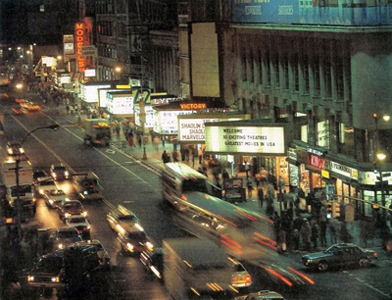
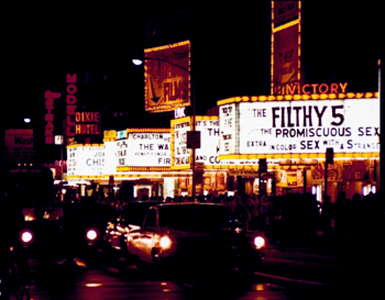
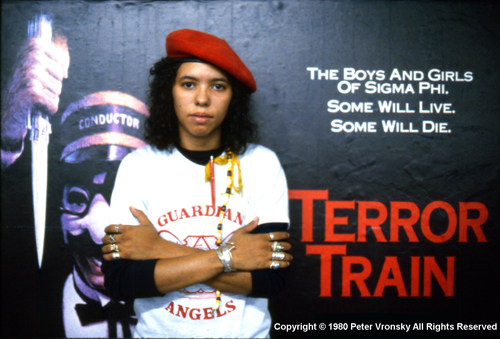
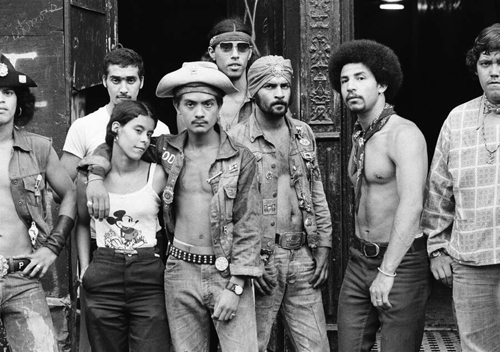
I had my own long history and love affair in and with New York in the 1970s-1980s as a documentary filmmaker and wannabe New Yorker, filming the punk rock scene at CBGB on the Bowery and riding the New York's seriously dangerous subway with Curtis Sliwa and Guardian Angels Subway Patrols in their early founding years and venturing out into the war zone ghettos like Fort Apache in the South Bronx, and Bedford-Sty and Brownsville (the "murder capital of New York") in Brooklyn, tripping out with pre-crack pre-Crips/Bloods era 'warriors'a street gangs like the Crazy Homicides and Savage Skulls.
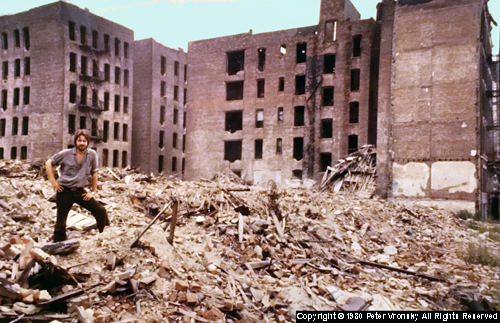
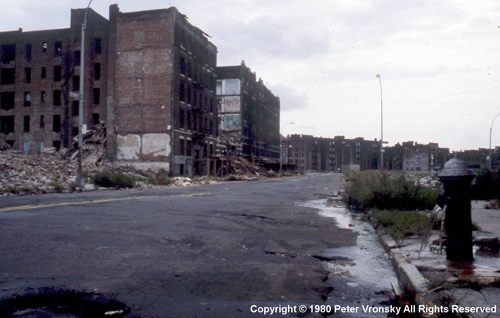
Fort Apache, South Bronx, 1980 "Broken
Promises" Copyright © 1980 Peter Vronsky All Rights Reserved
Today New York is like Singapore on the Hudson, all soft, toothless and stupid compared to the 1970s. Sylvia's on Malcolm X Boulevard in Harlem has been providing valet parking for the affluent breakfast crowds and tourists since the late 1990s, Alphabet City is a nest of boutique Housewives of New York cocktail bars, Hell's Kitchen has been renamed Clinton with rows of 'foodie' restaurants and boutique hotels where in the 1970s the Westies used to cut up corpses in bathtubs with meat cleavers and kitchen knives, and the blocks around Queensbridge projects - QB or "The Bridge", which in the 1980s had the highest murder count of any public housing projects in New York, and was ground-zero for a foundational generation of rap and hip-hop music, is now all orderly and surrounded by nice little tourist hotels and cafes for European and Asian travelers who cannot afford the astronomical room rates in Manhattan.
When I was in QB recently, the person with me was talking too loudly on the sidewalk at 10:30 pm and somebody from one of the houses shouted out at her, "Yo, keep it down, people live here." Queensbridge as a 'ghetto' is a joke now, like the rest of New York, and the once amazing QB music scene is as irrelevant and as commercialized as 'golden oldies.' As far as music goes, The Bridge is over. (See: Thomas Golianopoulos, "The Bridge is Over" Complex.com, Nov 25, 2014
.)I headquartered my crew
with my own Canadian-Punjabi homeboy bloods at the Casa Azul Jamaica Avenue. Shadyville at Jamaica and Springfield, once Haitian ground, is now run discretely by Moose Wala Nation from Brampton, Ontario - Canadians for cryin' out loud - with full-auto AK-47s and sober turbaned heads. "Legends never die #5911."
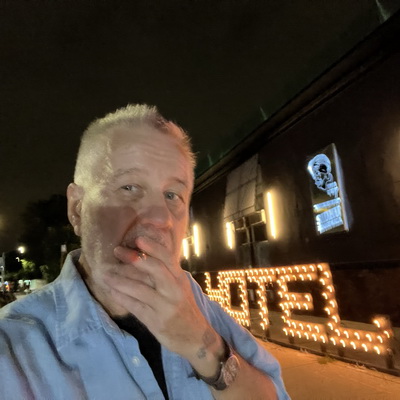
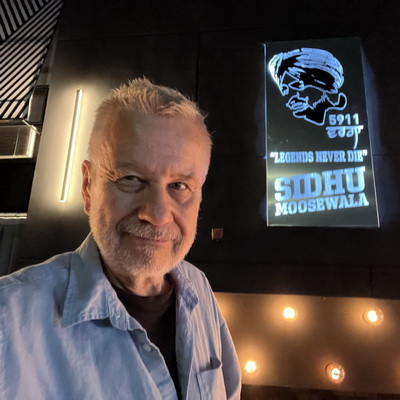
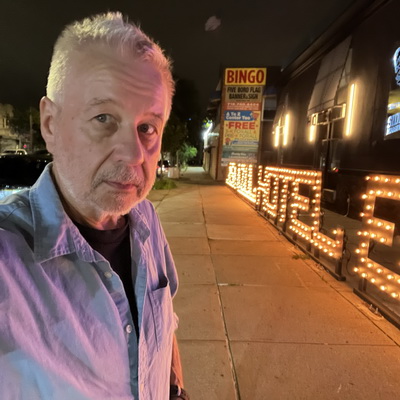
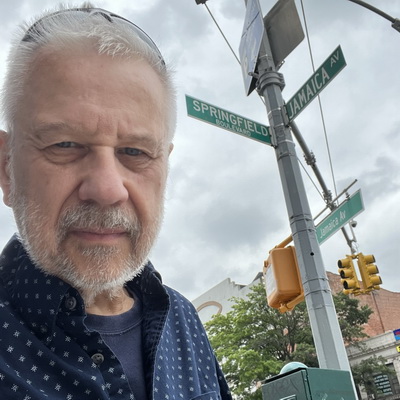
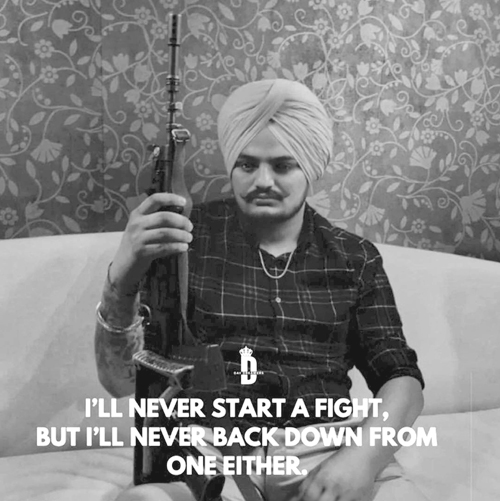
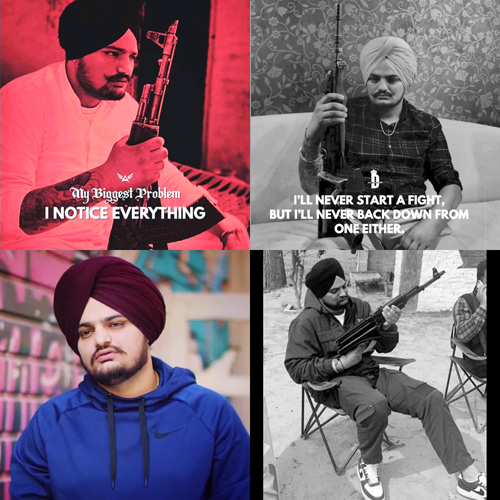
In other words, I had war stories of my own to put on the table with Cottingham right up until today and in the very epicentre of one of his hunting grounds on which I suspect he killed the most victims in his years of serial killing. It kept things moving for him, interesting and competitive! (Serial killers get bored very easily.) He was fascinated, tripping to the Village vicariously on the phone with me.
The one thing I could not "one up him" in my stories, was abducting and murdering women. Whenever one of my 'war stories' got too big for Cottingham, he'd shut me down with a story of his own that I could not match: how he killed somebody. That's how it worked. Over the years to get one up on me Cottingham has led me on the phone and by text to dead bodies from the streets and roads of Shadyville, turn by turn from Ground Zero, his wife and mother-in-law's former house on 215th Place in Queens Village, out to shores of Long Island and the woods of New Jersey and Pennsylvania.
His mother-in-law liked Cottingham so much that on occasion while on his way to Long Island, he'd spend the night there with a body in the trunk while his wife remained in suburban New Jersey taking care of their three children.
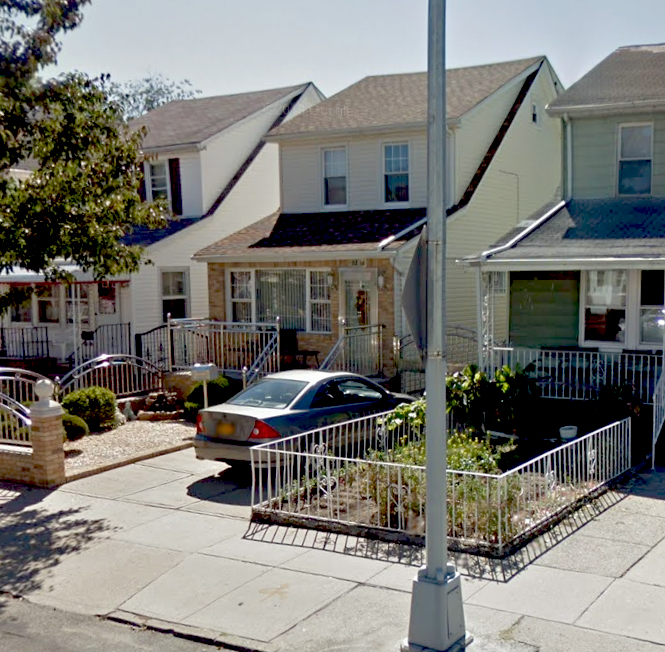
"I WAS HAROLD AND NEW YORK WAS MY MAUDE."
Cottingham loved exploring New York's nightlife, clubs, gambling, eating
and drinking, and even went into my turf, CBGB one night and Max's
Kansas City on another; both of which he hated. Nor was Cottingham shy
about exploring gay bars in the Meat Packing District or transvestite
bars in the Village to which once he took his fellow-workers at Blue
Cross for drinks after work to shake their world up. Later after
his arrest, testimony of that outing led to misinformation in the press
that his wife Janet, when she served divorce papers on him in March 1978
after ten years of marriage and three children, accused him of being
bi-sexual. Not true; Cottingham is flaming heterosexual and her
grounds for divorce were abandonment (he stopped coming home from work
regularly) and mental cruelty (he refused to have sex with her after
their third child.) There were no accusations of physical abusive
behavior or his being gay (not that there is anything wrong with that.)
Being nine-years apart in our age and our taste in music, made things interesting for the both of us. He had been at Woodstock; I was too young to have been able to go. (And no, he did not murder anybody at Woodstock.) I was in my early twenties in the late 1970s, into the downtown art scene and into Punk and New Wave music and Kitchen Synch video art, and my club hang-outs were places like Limelight, Danceteria, Max's Kansas City; Cottingham my elder by nine years and early thirties was more 'uptown' - into Celtic Pub music and Looking for Mr. Goodbar singles bars in the "Girl Ghetto" or the "Stew Zoo" (for "stewardess") on First and Second Avenues on the Upper East Side like the Tittle Tattle, T.G.I. Friday’s, Maxwell's Plum, Ali Baba, Sugar Tree, Play Street and Flaherty's, where he cruised and sometimes targeted his victims.
We both shared a nostalgia for getting laid bareback during the unbridled years of the hedonistic post-feminist 1970s in the wake of the 1960s 'sexual revolution and women's liberation' when women were as unashamedly horny and as sexually predatory as men, and the worst thing you could catch was herpes, before HIV/AIDS came to spoil the party in the 1980s. Cottingham preferred secretaries, school teachers and nurses from the hospitals around the Upper East Side singles bar strip; I cruised ballerinas, writers and artists in the single bars on the West Side on Columbus Avenue and Broadway near the Lincoln Center. We orbited women from opposite poles, the only difference being I didn't kill any of mine, cut their heads off and set their torsos on fire. Other that little quirk of his, Cottingham and I got along just fine and had we met in the 1970s, we probably would have wing-manned for each other.
As smart as he was, Cottingham never went to college. When he graduated high school in 1964, he immediately went to work in the mailroom of Metropolitan Life Insurance (MetLife)in Manhattan on Madison Avenue where his father was a vice-president. There Cottingham enrolled in computer operator classes, learning a lucrative 'blue/white collar' trade in how to run the big-ass fridge-sized mainframe UNIVAC computers that MetLife was installing in their offices, how to change magnetic reels, load punch-cards, running insurance premium computation jobs delivered to his desk.
In 1966 he left MetLife and brought his highly-valued skills to Blue Cross Insurance a few blocks away, where he remained gainfully employed for the next fourteen years until his arrest in 1980. Other than high school part-time jobs as a movie theatre usher, roofer and drugstore delivery boy, Cottingham as an adult held down a steady job, earning with overtime roughly what is equivalent today to $100,000 a year, commuting daily to work from New Jersey. He lived with his parents until he married in 1970. He and his wife Janet then lived in Little Ferry and Lodi, where they raised three children, two boys and a girl, while Cottingham killed scores of women to and from his daily commute into Manhattan.
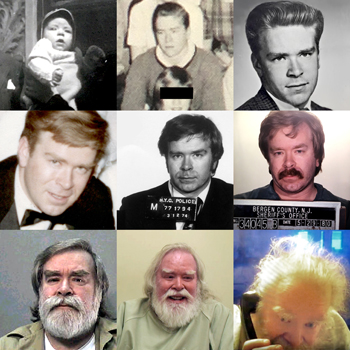
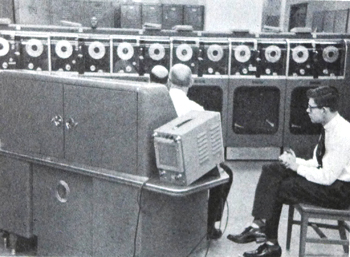
While only graduating high school, Cottingham is well-read and can hold an intelligently
opinionated conversation on a wide variety of subjects from science,
history, politics and current affairs and computer technology. In
the 1990s when the the prison used to allow it, he had a series of three desktop PCs
in his cell and a printer. He used to play games and keep keep
track of his income from bookmaking sports betting he ran and to
print betting slips. He had his hard drive partitioned creating a B: drive
and reprogrammed the boot sequence to automatically erase the B: drive
if a certain combination of key strokes were not hit when the computer was
turned on and booted up. Suspicious corrections officers kept paying him surprise
visits to seize his computer to search it for illegal activity they suspected
him in, but every time they booted up his computer, it would
automatically erase the drive B: partition with the incriminating data.
Eventually the frustrated prison officials seized his computer and sent it to the
FBI to analyse, and the FBI couldn't figure out either. It was
returned six weeks later, with the incriminating data erased from the
drive when the FBI turned it on. Near the end of the 1990s,
Department of Corrections banned inmates from owning computers, and they
had to all be forwarded to their families or confiscated.
Today Cottingham remains interested with computer technology, cell phones, the internet and how social media works. Like many incarcerated inmates he has a JPAY tablet on which he can text, receive photographs, download games and music, and receive money in his prison account. Cottingham and I text on JPAY back and forth, and I can send him pictures almost in real time from the field, which would become important in several investigations in which he would guide me to some crime scenes visually from the pictures as I walked or drove them, as often Cottingham does not remember or never knew the geographic nomenclature of his crime scenes, where he abducted, killed and later left his victims, but remembered the terrain and how to arrive there turn-by-turn.
The JPAY tablets cannot connect to the internet directly. An inmate composes an outgoing message on a tablet but then has to get on a JPAY kiosk and upload and download messages from and to it, which are all reviewed by censors and computer programs for prohibited communications and images. Pornography is prohibited, gang signs, images of weapons and maps, for example. Cottingham and I also talk daily by telephone or through a video-visit system where we can see each other on pre-booked one-hour video calls.
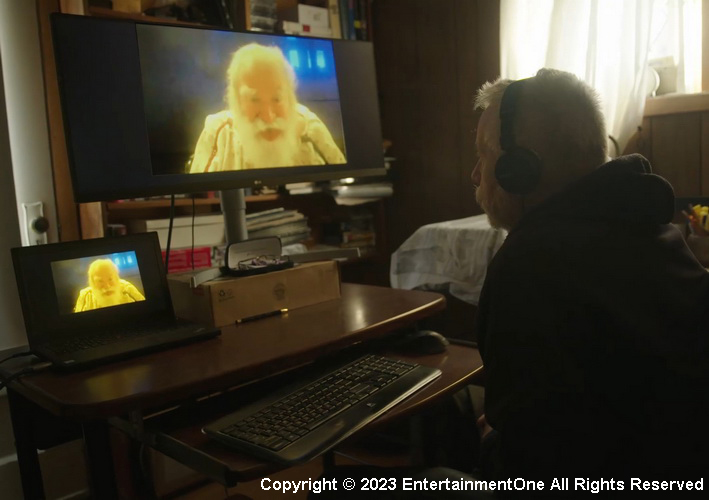

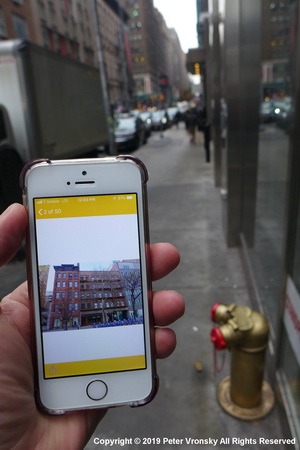
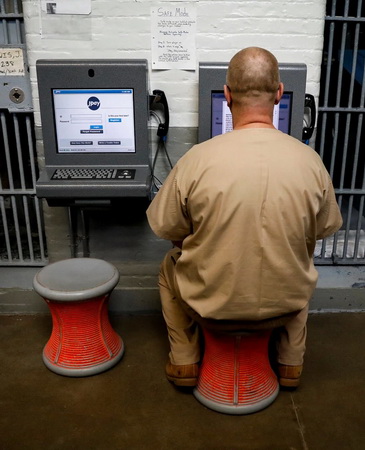
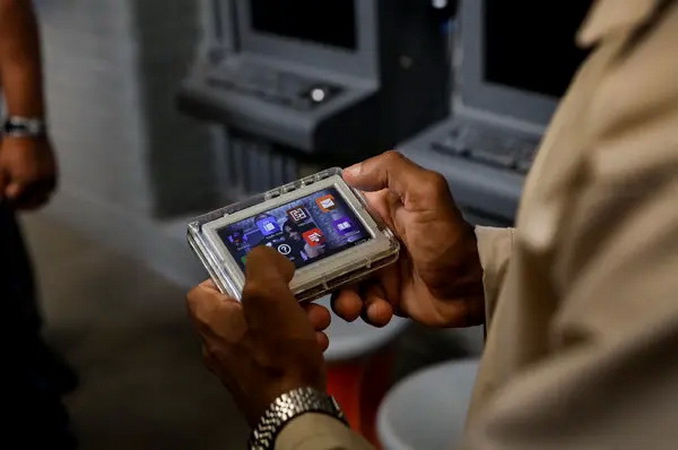
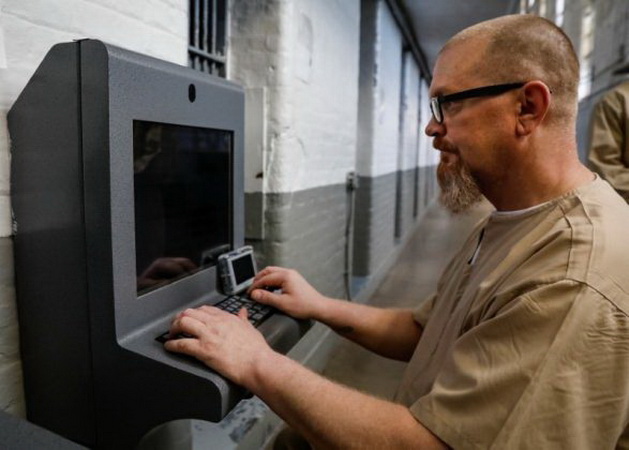
Cottingham's father William, was Cork Irish Catholic, from Mott Haven in the Bronx (where Cottingham was born before the family joined the postwar 'white-flight' to the suburbs of New Jersey in 1948), and his mother Anna was Silesian-Polish. But Cottingham identifies as pure "stubborn Irish Catholic" and as a Russian-Ukrainian, I bonded with Cottingham on our peoples' mutual love for poetry, drink and a good fight. (Cottingham's dad once bit the ear off somebody in barroom brawl, to as he said, "to take the fight out of them."
When I first introduced myself as a writer to Cottingham, not being permitted by the prison system to send him true crime books, I sent him the one book that was not about serial killers, the trade book version of my PhD doctoral dissertation the Penguin Books published about the Irish-American Fenian insurgent incursion into Canada following the American Civil War:
Ridgeway: The American Fenian Invasion and the 1866 Battle That Made Canada. It was a dense read, but he slogged through it and we had long talks about Irish history and the Irish temperament. (His family has prominent IRA Martyr roots from the Irish Easter Rebellion prior to his grandmother immigrating to New York in the 1920s as a refugee from the fighting in Ireland. Another ancestor was a cop with the NYPD in the 1930s.I sent Cottingham many books before his eyes went bad, including one that hit our mutual nostalgic longing for old lost New York, Jeremiah Moss's heartbreaking lament on neo-New York,
Vanishing New York: How a Great City Lost Its Soul which opened with this passage:ONE OF THE GREAT TRAGEDIES OF MY LIFE WAS THAT I HAD the misfortune to arrive in New York City at the beginning of its end. It was 1993, I was twenty-two years old, and already I was too late. I had missed the city’s every heyday—the rambunctious punk years of the 1970s and ’80s, the beatnik days of the 1950s and ’60s, the glorious wartime forties, the radical lefty thirties, the bohemian 1920s and ’10s, all the way back to the ur-countercultural era of Walt Whitman carousing and espousing at Pfaff’s beer cellar in the 1850s. I missed it all, over a century of the best of New York, thanks to two uncontrollable facts of my birth: its year and geographic location. But we cannot choose our time or place, and I hurried to the city as soon as I could, unaware that the early 1990s was quite possibly the worst moment to get attached to New York. It was like falling crazily in love with a ninety-three-year-old, too blind to see that she was fading. I was Harold and New York was my Maude. The city looked so alive-filled with creative vitality, still untamed and rough around the edges. How could I not believe it would last forever? I allowed myself to fall, as if would have have all the time in the world together.
Cottingham and I both had the good fortune to catch a glimpse of what Jeremiah Moss lamented missing completely, Cottingham nine years more of it than I. I missed out on Hubert’s Flea Circus on 42nd Street and Automat cafeterias, the old Madison Square Garden on Eighth Avenue and W. 50th and the splendor of old Penn Station, but arriving for the first time in New York in 1973 I had a good run of of tasting and enjoying some of the same 'golden era' New York that Cottingham revelled in. On our memory trips to old New York, Cottingham became Yogi Bear and I was the younger baby bear, "The big city beckons, Boo."
Cottingham and I even had a creepy physical affinity in our nine-year age difference, chubby and white-hair and white beard funhouse mirror reflection of each other. On family contact visits, while in a large visiting hall crowded with imamates and visitors you often became familiar with the same visitors, week after week. People asked me if Cottingham and I were were related, if he was "my pops." Once on a visit with Jennifer, somebody asked us if Cottingham and I were brothers, and Jennifer nodded toward me, and wisecracked, "Yes and he's the good one."
UNDERCOVER
Visiting and talking with Cottingham was akin to going undercover,
something I did a lot in my previous career for investigative network
television shows. I had an aptitude for it and for persuading closed
secretive groups and people to allow me to openly bring video cameras inside their
group. This was still an age before tiny covert cameras were
readily available.
In the 1980s and 1990s I went undercover into closed groups like the KKK, a conspiracy to overthrow a government in the Caribbean, mercenary recruiters to a war in Africa, weapons smugglers to Iran working for Oliver North during the Iran-Contra Affair, a religious brainwashing cult, Russian 'mafia' coal smugglers, KGB bankers, (I speak Russian fluently), and my final ride in the 1990s, inside a nuclear weapons materials smuggling ring in the breakaway rebel Islamic republic of Chechnya in Russia. I got in so deep into heavy crazy shit with a lot of Title 10/Title 50 exposure, that I had a permanent chair with my name etched into it in the debriefing rooms of the CIA and CSIS (Canadian Security Intelligence Service) where I was a regular guest interviewee.
I could persuade anybody either to let me openly film them or create a
cover story why I was carrying a video camera with me. Except for one
occasion, I never used hidden cameras, because most people who
do evil don't believe they are doing evil; they will do it on camera or
in front of an undercover cops. Criminals are mostly ego blinded
and stupid and serial killers, generally are the most stupid of the
species. It's a myth that serial killers are brilliant like Hannibal
Lector; most are of average intelligence or below. But they have a
superior animal cunning, which we often mistake for intelligence.
The key I learned to a
successful undercover operation to take down a target, is that you and
your target have to genuinely like each other. You cannot fake
friendship out which comes the trust necessary for a betrayal. It has to be
real; you have to feel it for your target and feel
it deep enough for them to feel it back and trust you and reveal what you need to know.
There is a lot of guilt when you at the end of an undercover operation
take down and expose your target, because you genuinely liked them and have a
trusting bond of friendship with them, and then you completely fuck them over in
the end. My previous experiences undercover lasted a few months the
longest; with Cottingham at this writing, it has been six years.
In the end, from all those random nostalgic conversations with him, I would pan out the gold nuggets of remembrances and flashes of previously unknown murders Cottingham would blurt out and digress to.
I was having one of those nostalgic 'old New York' conversations with him about where in the 1970s the best pastrami place was in New York (Sarge’s Deli on Third Avenue) and he off-hand as an aside, remembered leaving a body nearby on the way to get a pastrami sandwich. From our nostalgic reminiscences of hot dogs and hookers, I identified and with Jennifer assisted the closing of the 1973 murder of Maria Emerita Rosando Nieves, in Nassau County in 2022. (See: Part 9: 2021 - The "Curse of the McGraws": The 1970 Cold Case Murder of Lorraine McGraw )
SECRET CONFESSIONS REVEALED TO ME BY COTTINGHAM
Just like that, my quickie 18-month write and publish a simple true crime book with a twist about a relatively unknown historical serial killer, suddenly took a turn without my realizing it, to become a complex six year odyssey (so far) through the world of cold case investigations that is still ongoing at this writing. It is not over.
When I arrived at the scene to meet Cottingham in February 2018, Cottingham stood convicted in 6 murders. Today in March 2024 at this writing, he stands convicted of 18 murders! Nine of those cold case murder closures between 2021 and 2022, were closed with the assistance of the late Jennifer Weiss and me.
But all this would happen only later in the future, in 2021-2022, after a long rough, rough, road of travel in between beginning first with the search for the two severed heads. We did not start off trying to solve any of the 85-100 cold case murders that Cottingham claimed he perpetrated. In the first year we focused on trying to locate Deedeh's severed head and that of the unidentified teenage girl with her.
NEXT PART 1-B: 2018-2019 - Searching for Severed Heads and Who is "Torso Jane Doe"?